Abstract
This article revisits the classical concept of Einheitspsychose—or unitary psychosis—originally proposed by 19th-century European psychiatry, and reformulates it into a modern nosological and pathophysiological framework named the General Psychiatric Syndrome. The traditional dichotomy between schizophrenia and affective disorders is questioned through historical, clinical, and biological evidence suggesting a shared neurodevelopmental and genetic basis for a wide range of psychiatric syndromes. Drawing from more than four decades of hospital-based psychiatric experience, the author proposes that conditions like schizophrenia, bipolar disorder, autism spectrum disorders, impulse-control disorders, and even certain neuroses are manifestations of a single underlying pathophysiological process. The article incorporates genetic studies, clinical heuristics, and updated conceptual models—including a dimensional understanding of psychosis as proposed by Tim Crow (1990)—to support a unified syndromic perspective that transcends categorical diagnostic limitations.
Keywords: Unitary psychosis; General psychiatric syndrome; Kraepelinian dichotomy; Psychotic spectrum; Neurodevelopment; Mirror neurons; Dimensional psychiatry
Introduction
The diagnostic framework of modern psychiatry remains largely grounded in categorical distinctions established in the late 19th and early 20th centuries, especially those crystallized by Emil Kraepelin. Chief among these is the separation between dementia praecox (later renamed schizophrenia) and manic-depressive illness (now bipolar disorder). However, clinical reality frequently defies such rigid classifications. Comorbidity, symptom overlap, and diagnostic transitions over time suggest that many psychiatric conditions may not be distinct diseases, but rather diverse expressions of a shared pathophysiological vulnerability.
This article offers a contemporary reformulation of an older idea— the theory of Einheitspsychose or “unitary psychosis”—under the concept of the General Psychiatric Syndrome. This integrative model draws from neurodevelopmental, genetic, and clinical research, but above all from long-term, in-depth psychiatric observation in hospital settings. It posits that many disorders traditionally labeled separately (e.g., schizophrenia, bipolar disorder, ADHD, autism spectrum disorders, impulse disorders, and even certain personality pathologies and neurotic conditions) may in fact be syndromic manifestations of a single underlying process. This view revives and modernizes the original notion of unitary psychosis, but reinterprets it through the lens of 21st-century biological psychiatry and clinical complexity [1].
Historical Background: The Theory of Unitary Psychosis (Einheitspsychose)
The concept of Einheitspsychose refers to a dominant current in 19th-century German psychiatry prior to Kraepelin, according to which all psychoses were surface expressions of a single underlying disease process. The boundaries between clinical manifestations such as mania, melancholia, delusion, catatonia, and confusion were considered fluid and shifting, with patients frequently presenting a succession of symptom constellations throughout the evolution of a single illness.
The Belgian psychiatrist Joseph Guislain (1797–1860) is often credited as the intellectual forerunner of this theory. In his 1833 work Traité des phrénopathies, he proposed that all mental disorders were variations of a core disease process characterized by four consecutive stages: (1) cerebral exaltation, (2) structural aberration, (3) oppression of brain function, and (4) psychic exhaustion. He emphasized “phrenalgia” (mental pain) as the common denominator of all psychiatric illness, triggered by psychological stressors such as grief, deprivation, or trauma [2].
Zeller (1804–1877), who translated Guislain’s work into German and directed the asylum in Winnenthal, became one of the main promoters of the unitary psychosis model in Germany. He asserted that various forms of mental illness were simply stages of one morbid process. Influenced by Naturphilosophie, Zeller emphasized the moral and spiritual unity of the individual and resisted attempts to fragment psychiatric diagnosis into rigid categories [3].
A major figure in the development of biological psychiatry, Wilhelm Griesinger (1817–1868) briefly worked with Zeller and accepted the concept of a unitary psychosis, though he rejected its moralist overtones. For Griesinger, mental illnesses were brain diseases, with symptoms unfolding progressively in the cognitive, affective, and volitional domains. He believed the evolution of psychosis could ultimately lead to the total disintegration of mental life [4].
From the 1860s onward, the theory of unitary psychosis was increasingly criticized. Kahlbaum (1828–1899), in his 1863 text Die Gruppierung der psychischen Krankheiten, argued for a systematic classification of mental illnesses into distinct clinical types. He saw the unitary concept as scientifically sterile and an impediment to therapeutic progress, advocating instead for a nosology based on consistent patterns of onset, course, and outcome [5].
Neumann (1814–1884), the most radical proponent of unitary psychosis, dismissed any form of diagnostic classification as rhetorical. In his Lehrbuch der Psychiatrie (1859), he stated: “There is only one kind of mental illness. We call it madness (Irrsein).” For Neumann, all psychotic symptoms were expressions of a single pathological entity— Einheitspsychose. His stance reflected a philosophical resistance to reductionism, even as it alienated the emerging Kraepelinian tradition [6].
In contrast, Kraepelin introduced a lasting dualistic nosology that separated psychotic illnesses into two main types based on prognosis: dementia praecox (later schizophrenia) and manic-depressive insanity (bipolar disorder). This framework dominated 20th-century psychiatry and relegated the theory of unitary psychosis to the margins of psychiatric thought [7].
In the mid-20th century, Klaus Conrad (1905–1961), drawing on Gestalt psychology and clinical observation, again suggested that various psychotic conditions may stem from a common endogenous base. He noted that patients with affective disorders often had schizophrenic offspring, and that many symptoms thought to be disorder-specific (e.g., hallucinations, delusions, catatonia) appeared across diagnostic lines. Conrad’s work, although framed differently, echoes the earlier idea of a syndromic continuum [8].
The Psychosis Continuum: Tim Crow’s Contribution (1990)
In 1990, British psychiatrist Tim Crow reignited the debate on the unity versus dichotomy of psychotic disorders with his influential article “The Continuum of Psychosis and Its Genetic Origins”. In it, Crow proposed that schizophrenia, bipolar disorder, and schizoaffective disorder should not be viewed as categorically distinct entities, but rather as points along a psychosis continuum. This view directly challenges the Kraepelinian dichotomy and aligns conceptually with the older idea of unitary psychosis [9].
Crow suggested that these disorders share common genetic and neurodevelopmental underpinnings, with symptomatic expression varying according to individual vulnerabilities and environmental factors. For Crow, this continuum may stem from variations in cerebral asymmetry—particularly those involving the languagedominant hemisphere—which could influence how psychotic symptoms manifest. His work emphasized that psychotic and affective features often coexist and blend, and that sharp diagnostic boundaries may obscure the true structure of psychiatric illness. Crow’s proposal offers a robust foundation for understanding psychotic syndromes as interconnected phenomena. His model provides empirical support for the core thesis of this article: that many psychiatric disorders— including schizophrenia, bipolar disorder, schizoaffective disorder, and beyond—share overlapping genetic, neurobiological, and clinical dimensions.
Dimensional Psychiatry and Overlapping Syndromes
The following diagram illustrates how modern dimensional approaches in psychiatry visualize mental disorders along a spectrum, with overlapping symptoms and causes:
The diagram presents a dimensional model of psychiatric syndromes, ranging from intellectual disability and autism to schizophrenia, schizoaffective disorder, and bipolar/unipolar disorder. It shows that symptoms such as cognitive impairment, negative symptoms (e.g., emotional blunting), positive symptoms (e.g., delusions, hallucinations), and mood swings can cut across diagnostic categories. At the etiological level, both genetic factors and environmental stressors contribute to the development of these conditions (Figure 1).
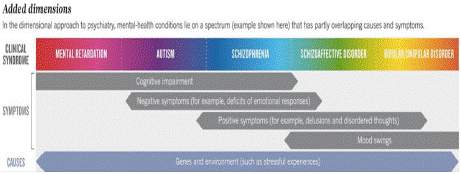
Figure 1: Added Dimensions: Clinical Spectrum, Symptoms, and Causes
in Psychiatry (Adapted from a dimensional model of psychosis and
developmental disorders).
This figure reinforces the idea that psychiatric diagnoses are not isolated silos but rather variable configurations along a shared continuum. It visually supports the concept of a General Psychiatric Syndrome, in which a core neurodevelopmental vulnerability gives rise to diverse clinical expressions depending on the interplay of genetic, biological, and environmental influences.
View from the Psychiatric School of Goiânia
In our theoretical framework concerning the hypothesis of the single psychosis (first published in M. Caixeta et al. – Neuropsychological Psychiatry, Sparta Publishing, 2013) [10-13], which we prefer to call the theory of the general psychiatric syndrome, our focus lies primarily on the pathophysiology of psychiatric disorders rather than on clinical manifestations or nosographic classification. In our theory, we include under the term general psychiatric syndrome a much broader range of conditions than merely schizophrenia and bipolar disorder.
Several authors have proposed an assimilation of neuroses into the old theory of the single psychosis — which we refer to as the general psychiatric syndrome. For instance, the Spanish psychiatrist López-Ibor authored an interesting, old, and visionary book in which he argues for the assimilation of the former neuroses — such as anxiety disorders, phobias, obsessions, hysteria, etc. — into mood disorders. This book is titled Neuroses as Illnesses of the Soul (Las neurosis como enfermedades del ánimo). Another author, the British psychiatrist Peter Tyrer, also coined the term General Neurotic Syndrome to encompass the aforementioned conditions.
According to our view, many psychiatric disorders are not truly autonomous diseases and therefore do not warrant their own separate nosographic classification. Rather, they are more appropriately understood as syndromes, clusters, or groupings of symptoms within a common pathophysiological framework. Thus, we understand there to be multiple syndromes within a single pathophysiology. For example: obsession, anxiety, phobia, gender or sexual orientation disorders, panic disorder, depression, self-harming behaviors, dyslexia, mood derailment (which we prefer to call thymopathy instead of bipolar disorder, as not all cases include mania or hypomania), Asperger’s syndrome or other variants of the autism spectrum, schizophrenia, substance use disorders, eating disorders, hyperactivity — these are all instrumental disorders.
In several of our books, (Marcelo Caixeta e cols ) we address these issues in greater depth, such as:
(a) Neuropsychological Psychiatry, Sparta Publishing,
(b) Child Psychiatry, Sparta Publishing,
(c) Infant Psychiatry, Sparta Publishing,
(d) Developmental Psychiatric Disorders, Sparta Publishing.
In these cited materials, we present several clinical cases involving associations — which others label as “comorbidities,” a term that masks a lack of understanding and attempts to build a neutral “bridge” among multiple syndromes without taking a theoretical stance.
Examples of such associations include:
1. Anxiety, hyperactivity, and depression,
2. Asperger’s syndrome and schizophrenia,
3. Asperger’s syndrome and hyperactivity,
4. Anxiety and Asperger’s syndrome,
5. Hyperactivity and borderline personality disorder,
6. Hyperactivity and antisocial behavior,
7. Bipolarity and schizophrenia,
8. Hyperactivity and instrumental disorders.
Where Does This Psychiatric Heuristic Come From?
The findings presented here are the result of 44 years of uninterrupted hospital-based psychiatric experience, grounded in numerous clinically constructed genograms. These genograms revealed the presence of various clinical syndromes within the families of patients. The clinical insights were further corroborated by biological research. For instance, the well-known study conducted by the Cross-Disorder Group of the Psychiatric Genomics Consortium, published in Nature Genetics, Volume 45, pages 984–993 (2013), identified genetic correlations between bipolar disorder and schizophrenia, bipolar disorder and depression, as well as between ADHD and autism spectrum disorder.
Moreover, throughout these four decades of clinical and hospitalbased psychiatric work, we have observed numerous conditions that initially presented as one syndrome but later evolved into another. Examples include:
1. A brief delusional psychosis that later developed into bipolar disorder.
2. A case initially diagnosed as bipolar disorder that underwent a process of schizophrenization.
3. A case of schizophrenia that later manifested with bipolar symptoms.
4. An Asperger patient who later developed schizophrenia.
5. An Asperger patient who later exhibited symptoms of bipolarity.
6. A hyperactive patient who later developed a bipolar disorder.
7. A hyperactive patient who eventually manifested instrumental and learning disorders.
Over time, we observed that many conditions overlapped or mimicked others. This is precisely why Emil Kraepelin emphasized that the primary criterion for diagnosing psychiatric illnesses was following their course throughout the history of the disease.
Intuitive Graphics and Discussion
In Figure 2, we can see that a common neurodevelopmental problem shared by various disorders is dysfunction in the mirror neuron system. In addition to mirror neuron issues, there may also be poor mother-infant/adult-infant interaction, unhealthy forms of love, disordered structure, and “familiopathy”—all mesological (environmental) factors. Deficient mirror neurons result in a “weak self,” a “weak frontal lobe.” This weak self has poor insight. Such weak insight, when faced with hormonal disturbances, instinctual issues (pleasure, aggression, sexuality), or certain biochemical problems— such as hyperhomocysteinemia, folate deficiency, or thyroid disorders—can trigger clinically significant psychiatric illnesses (i.e., shift them from Axis II to Axis I of the DSM system), as listed on the left side, in the red rectangle. Due to poor frontal functioning, the impaired mirror neuron fails to generate a strong self because the individual does not receive the “secondary self ” from the motherchild relationship, precisely because their mirror neuron does not capture the mother’s own self. This leads to poor frontal inhibition, causing immaturity or “immaturation.” The result is infantilism, an excess of instincts and pleasure-seeking, driven by dopamine craving, culminating in the various illnesses on the left, within the red rectangle. In many cases, neuroleptics are required for clinical management.
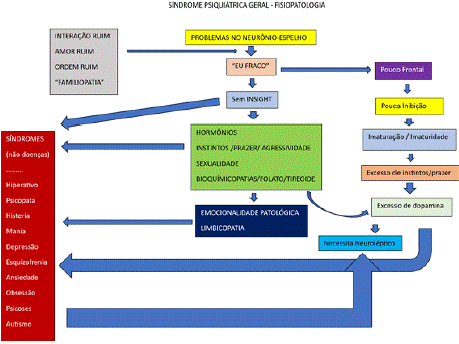
Figure 2: Sindrome Psiquiátrica Geral – Fisiopatologia.
In Figure 3, we address how these neurodevelopmental abnormalities can result in numerous problems. For instance, changes in the posterior fossa may lead to autistic disorders. This autism, in turn, can unfold into or associate with schizophrenia, childhood psychosis, and certain forms of epilepsy [14,15]. Paranoid schizophrenia may arise from this, and some forms of left temporal lobe epilepsy can present a schizophrenia-like syndrome. But neurodevelopment itself can produce such patterns. Occipital lobe abnormalities— occasionally found in MRIs in neurodevelopmental conditions—may relate to depression (note: the mention of catatonic schizophrenia here is inaccurate). Right hemisphere changes may lead to hyperactivity, hyperthymic temperament, and attention deficits. Parietal changes may cause dyspraxia and dyscalculia. Frontal alterations can result in intellectual disability (oligophrenia), psychopathy, or anterior cingulate dysfunction leading to simple schizophrenia. Orbitomesial frontal dysfunction may underlie hebephrenic schizophrenia. Temporal alterations may result in paranoid schizophrenia, dyslexia, anxiety, phobia, and obsession. Basal ganglia alterations, stemming from the neurodevelopmental substrate of affective disorders (a term we prefer over “bipolar disorder”), may lead to tics. Therefore, it becomes clear that neurodevelopmental abnormalities can manifest as learning disorders, instrumental syndromes, temperamental changes, affective and cognitive syndromes—resulting in learning disorders, autism, schizophrenia, oligophrenia, and some forms of epilepsy, all tied to the broader context of the general psychiatric syndrome.
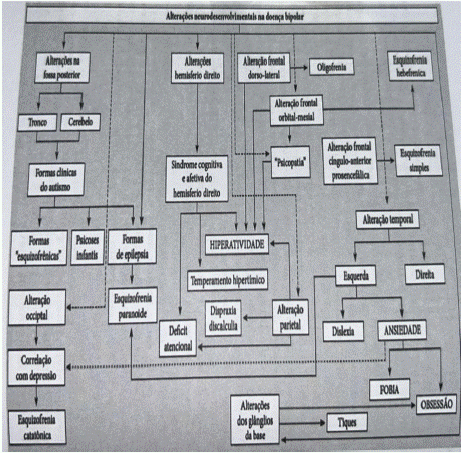
Figure 3: Alterações neurodesenvolvimentais da Síndrome Psiquiátrica
Geral.
In Figure 4, we observe several clinical syndromes with psychotic features such as catatonia, perplexity, paranoia, conversion, dissociation, etc. When this general psychiatric syndrome combines with biochemical or metabolic disturbances, it can lead to gonadal, thyroid, or adrenal dysfunctions, which worsen or render psychiatric syndromes more treatment-resistant. Neurodevelopmental issues, already discussed, are also involved. Temperamental changes may lead to antisocial, narcissistic, borderline personality traits. Affective, emotional, and volitional disturbances may disrupt impulse control, leading to instinctual disorders: gambling, substance abuse (alcohol, nicotine), sexual impulsivity. Passionate syndromes linked to temperament also emerge, including affective derailments of the “thymopathic” type, giving rise to fanatical, litigious, idealistic, or even visionary behaviors. Thus, this general psychiatric syndrome encompasses neurodevelopmental disorders, clinical problems, instinctual disturbances, affective dysregulation—all of which may be worsened, triggered, or accelerated by biological events such as puberty, menopause, gonadal, thyroid, or adrenal changes. Dysfunction in the somatostatin or prolactin axis, or hypothalamicpituitary syndromes, may also disrupt a pre-existing thymopathic diathesis. We use the term “thymopathic” because “bipolar disorder” is becoming outdated; not all thymopathic energetic dysregulation presents with mania or hypomania.Regarding neurodevelopmental problems, we are dealing not with diseases per se, but with disorders or syndromes that may include oligophrenia, autism, schizophrenia, epilepsy, dyslexia, dyscalculia, dyspraxia, and hyperactivity. This gives us a broad overview of the general psychiatric syndrome, which, as we can see, differs greatly from the early 19th-century concept of a unitary psychosis as proposed by Griesinger and other psychiatrists of that era.
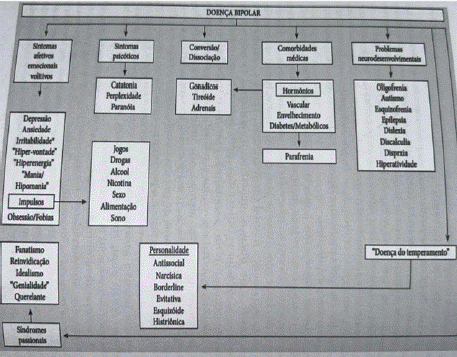
Figure 4: Síndromes clínicas ligadas à Síndrome Psiquiátrica Geral.
In Figure 5, we see a more intuitive summary of the General Psychiatric Syndrome, highlighting its most important aspects.
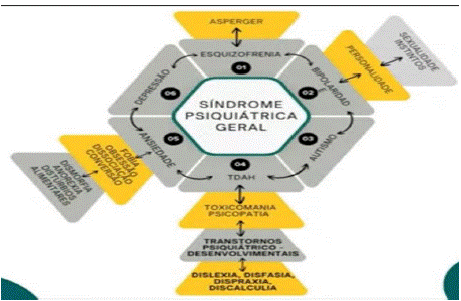
Figure 5: Síndrome Psiquiátrica Geral – Caixeta et Cols.
– the relationship between Asperger’s syndrome and schizophrenia;
– the relationship between mood disorders and both personality and instinctual/impulse control disorders;
– the connection between bipolarity and autism;
– the link between attention deficit disorder and substance abuse, psychopathy, developmental psychiatric disorders, learning, and cognitive-instrumental disorders;
– the association of anxiety with phobia, obsession, dissociation, conversion, dysmorphia, anorexia, and eating disorders;
– and the close relationship between depression and anxiety.
How Can we Relate the Various Components of the General Psychiatric Syndrome Pathophysiologically?
How can we understand this General Psychiatric Syndrome within a broad pathophysiological and psychopathological framework that encompasses all the clinical syndromes listed above?
A fundamental element is dysfunction in the mirror neuron system. There is a breakdown in the operation and anatomicalfunctional integrity of these neurons. On one hand, this leads to impairments in social contact, resulting in Asperger’s syndrome or broader autism spectrum disorders (ASD). In Asperger/ASD patients, particularly during hormonally sensitive periods such as puberty, emotional derailments may occur. During these “gonadopathic” or “hormonal” phases, limbic overactivation may emerge, potentially triggering schizophrenic syndromes. There is a clinically significant overlap between schizophrenia and Asperger/ASD symptomatology [16-19].
Additionally, autistic individuals tend to be “de-afferented” from the environment — they are egocentric, less attuned to external cues — which leads to elevated anxiety. We observe this in individuals with sensory deprivation: the deaf, blind, socially or emotionally deprived. They become preoccupied with others’ speech, fail to read social cues effectively, and often appear anxious, suspicious, withdrawn, or schizoid.
On the other hand, mirror neuron dysfunction may also result in a form of emotional coldness. This leads to diminished connection with others, reduced affective resonance, or emotional indifference toward others. The individual becomes hyperactive because attentional deficits set in: the person is over-engaged with the external world in general, but poorly connected to social relations. This attentional deficit, combined with hyperactivity, leads to excessive pleasureseeking, self-centeredness, and egocentrism.
As a result, hedonism increases — since the individual derives little or no pleasure from others or from interpersonal interactions, they seek self-stimulation. This line of development gives rise to conduct disorders, psychopathy, and various forms of addiction and compulsive behaviors, including satyriasis, nymphomania, bulimia, pathological gambling, oniomania (compulsive shopping), and other disturbances of instinctual life.
Another clinical trajectory occurs when hyperactive children — initially energetic and playful — begin to worry about life responsibilities in adolescence and adulthood. At this point, anxiety emerges. Then come depression, obsession, and, in some cases, eating disorders (“I’m gaining weight,” “I’m too thin,” “I need to control myself ” — body dysmorphias). Also included are generopathies such as “This isn’t my real gender,” “I need to change my body,” “I must undergo bariatric or gender reassignment surgery,” etc. Somatoform disorders also fall within this same pathophysiological/ psychopathological axis.
Puberty, with its hormonal turbulence (“pubertal hormoneopathy”), further destabilizes already fragile psychiatric structures. The same occurs during menstruation, pregnancy, menopause — all hormonal phases that disrupt neurochemical balance, particularly serotonergic tone.
Another relevant trajectory involves the so-called instrumental disorders, particularly seen in hyperactivity and in autism spectrum conditions. These include working memory deficits, which impair feedback mechanisms regarding one’s own actions, speech, and praxis. When feedback is compromised, the individual cannot adequately monitor or correct their actions. This results in dyspraxia — which, in turn, impacts dyslexia. For instance, the child fails to achieve proper phonological control because their praxic system is impaired. Why? Because their mirror neurons are deficient. (See: M. Caixeta et al. — Developmental Psychiatric Disorders, Sparta Publishing.)
Mirror neurons capture not only what comes from the external world but also internal signals. When mirror neuron function fails, we may lose access to our own phonological processing or motor programs, resulting in poor internal monitoring of speech and action. This generates instrumental disorders. We also observe imbalances between the right and left hemispheres, including increased sinistropy (left-sidedness), resulting in disordered cerebral lateralization.
Such dyslateralization may also lead to dyspraxia, dyscalculia, and even generopathic syndromes. For example, in gender identity disorders, neuroimaging shows a “feminization” of interhemispheric connectivity — a pattern more typical of females — in individuals assigned male at birth. This neurostructural trait has been observed in transgender patients and is one of the many elements integrated into the General Psychiatric Syndrome model
How A Common Pathophysiology Can Explain Different Clinical Syndromes
A pathophysiological and psychopathological understanding of the General Psychiatric Syndrome may shed light on numerous clinical phenomena observed in everyday psychiatric practice — phenomena that are difficult to explain using a rigid nosographic model, particularly one grounded in categorical or Kraepelinian classifications. In such closed, nuclear, mutually exclusive diagnostic systems, one disease cannot coexist with another. Hence, what current models call comorbidity is, in fact, a theoretical aberration — a teratology within the Kraepelinian system.
Within the framework of the General Psychiatric Syndrome, we are able to identify, understand, explain, and even treat several clinical presentations. Some examples are listed below:
(a) Many patients diagnosed with bipolar disorder present with poor insight — they are unaware of their illness. This could be explained by dysfunctions in mirror neurons, associated with hyperactivity and emotional coldness, within the broader bipolarthymopathic spectrum. These neuronal dysfunctions tend to become more pronounced during mood derailments.
(b) Another common clinical scenario is the patient with Asperger’s syndrome who exhibits mood swings. This is frequently seen in practice. Such a patient may present initially with anxiety, which may then evolve into depression, or transition into obsessive behavior.
(c) Schizophrenic patients often develop depression or obsessive symptoms — or even manic agitation. All these hybrid or transitional states are comprehensible within the framework of the General Psychiatric Syndrome.
(d) Some patients display both hyperactivity and autistic features: they are hyperactive, yet also have significant social interaction deficits.
(e) Some individuals with Asperger’s syndrome also develop psychopathic traits. The emotional coldness and social detachment arising from mirror neuron dysfunction can, in certain cases, evolve into a schizoid profile that degenerates into psychopathy. These patients become victims of their own hedonism: their desires are unrestrained, their emotional resonance is weak, and their inhibition is impaired — creating fertile ground for psychopathic behavior.
(f) Eating disorders are often associated with obsessive symptoms, anxiety, depression, or excessive energy. These combinations frequently form a thymopathic syndrome. What are usually called “comorbidities” in such cases are not true combinations of separate diseases, but rather syndromic expressions of a shared pathophysiology — which is precisely the core concept of the General Psychiatric Syndrome.
(g) Hyperactivity, particularly in males, is often associated with dysfunctional family backgrounds (familiopathies) and may culminate in psychopathy. In females, hyperactivity combined with problematic family dynamics and hormonal changes — such as puberty or contraceptive use — may lead to borderline behavior. In summary:
(1) The borderline personality could be conceptualized as female hyperactivity plus familiopathy;
(2) The psychopathic personality as male hyperactivity plus familiopathy.
Thus, these integrative perspectives become much more fluid and clinically useful when anchored in the conceptual framework of the General Psychiatric Syndrome
Delusional Disorders and the General Psychiatric Syndrome
An important chapter to consider here involves exploring the relationship between delusional disorders and the General Psychiatric Syndrome. It is interesting to note that in French psychiatry, these delusional disorders were historically referred to as chronic delusions, while in German psychiatry they were called paranoia or paraphrenia.
What we often observe in such delusional disorders is that, in many cases — particularly in women — the affected individuals already presented with a pre-existing thymopathic diathesis (i.e., mood vulnerability), having had previous issues with hyperactivity, depression, or anxiety. As these women approach menopause, they begin to exhibit signs of suspiciousness, social withdrawal, and eccentric behaviors — becoming the proverbial “cat aunt,” engaging in neighborhood disputes, and displaying behavioral changes. Due to the estrogen decline during menopause, psychotic symptoms may emerge. Similarly, in cases of surgical gonadal castration, it is not uncommon for women to develop severe psychiatric syndromes, including even schizophreniform episodes. These phenomena are strongly linked to the menopausal transition.
Among men, late-onset psychoses such as paraphrenia — often with a vascular basis — are also common. Contributing factors may include hypertension, dyslipidemia, smoking, alcoholism, obesity, or folate-related vasculopathies. It is frequently observed that patients with the General Psychiatric Syndrome, particularly those with thymopathic features, present with disruptions in the folate cycle: low folic acid, deficiencies in vitamins B2, B6, B9, and B12, elevated homocysteine, and genetic processing difficulties involving the MTHFR gene. These alterations lead, among other effects, to reduced serotonin synthesis and increased homocysteine levels — which may contribute to vascular dysfunction. Such vascular problems are implicated in what we refer to as vascular psychoses (by analogy with vascular depressions). Therefore, many chronic delusional states may be linked to these underlying pathophysiological processes.
However, there are also cases of chronic delusions that are not necessarily related to the General Psychiatric Syndrome as we have defined it — such as those arising in patients with cerebrovascular disease, like Binswanger’s hypertensive leukoencephalopathy or vascular dementia. These individuals may present with psychiatric symptoms even before the onset of full-blown dementia, often manifesting chronic delusions, particularly of the paraphrenic type. In such cases, the etiopathogenesis falls somewhat outside the scope of the General Psychiatric Syndrome discussed above.
References
- Berrios GE & Beer D. The notion of unitary psychosis: A conceptual history. History of Psychiatry. 1994; 5: 13–36.
- Guislain J. Traité des phrénopathies: ou doctrine nouvelle des maladies mentales. Bruxelles: Méline. 1833.
- Zeller EA. von. Über die Einheit der psychischen Krankheiten. Stuttgart: Verlag von Scheitlin & Krais. 1854.
- Griesinger W. Mental Pathology and Therapeutics (trans. by C. Lockhart Robertson & James Rutherford). New York: W. Wood. 1867.
- Kahlbaum KL. Die Gruppierung der psychischen Krankheiten und die Eintheilung der Seelenstörungen. Danzig: A.W. Kafemann. 1863.
- Neumann H. Lehrbuch der Psychiatrie. Leipzig: Otto Wigand. 1859.
- Kraepelin E. Manic-depressive insanity and paranoia. Edinburgh: Livingstone. (Original work published 1899). 1919.
- Conrad K. Die beginnende Schizophrenie: Versuch einer Gestaltanalyse des Wahns. Stuttgart: Thieme. 1958.
- Crow TJ. The continuum of psychosis and its genetic origins. British Journal of Psychiatry. 1990; 156: 788–797.
- Caixeta M, Caixeta L, Vargas C, Caixeta V, Canedo D, Soares R, et al. Psiquiatria neuropsicológica. São Paulo: Editora Sparta. 2018.
- Caixeta M, Nogueira Y, Veras A. A psiquiatria da criança. São Paulo: Editora Sparta. 2023.
- Caixeta M, Caixeta L. Psiquiatria infantil. São Paulo: Editora Sparta; 2019.
- Caixeta M, Figueiredo G, Toledo S. Transtornos psiquiátricos do desenvolvimento. São Paulo: Editora Sparta; 2023.
- Daker M. Unitary Psychosis Revisited: A Transdiagnostic Approach to Severe Mental Illness. London: Cambridge Press. 2021.
- Chalmers DJ. The Conscious Mind: In Search of a Fundamental Theory. Oxford: Oxford University Press. 1996.
- Damasio A. The Feeling of What Happens: Body and Emotion in the Making of Consciousness. New York: Harcourt. 1999.
- Lacan J. écrits. Paris: Seuil. 1966.
- McGilchrist I. The Master and His Emissary: The Divided Brain and the Making of the Western World. New Haven: Yale University Press. 2009.
- Searle JR. Minds, Brains, and Programs. Behavioral and Brain Sciences. 1980; 3: 417–457.
